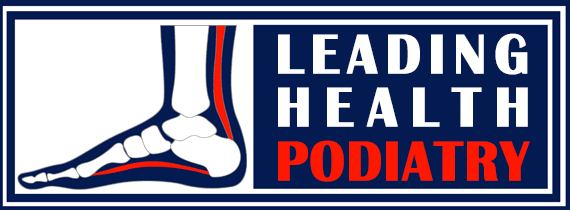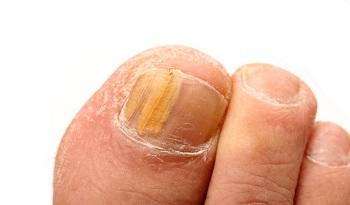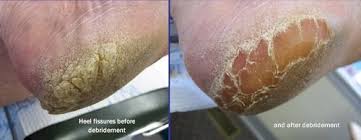What is the Most Effective Treatment for Toenail Fungus? A Podiatrist’s Take
Toenail fungus, also known as onychomycosis, is a common condition that affects many people. While it may not be the most painful condition, it can be quite stubborn and difficult to treat. If you’re struggling with toenail fungus, you may be wondering, “What is the most effective treatment for toenail fungus?” As a podiatrist with years of experience treating patients with fungal nails daily, I can offer some insights into the best treatment options.

For most cases of toenail fungus, oral antifungal medications such as terbinafine (Lamisil) or itraconazole (Sporanox) are considered the most effective treatments. These medications offer higher cure rates compared to other options. However, while they can be highly effective, they do come with potential side effects, particularly concerning liver function. This is why regular liver function tests are necessary while you’re undergoing treatment.
Despite their proven effectiveness, oral antifungals are often not the first line of treatment for many patients. The potential risks—especially related to the liver—make it a less appealing option for those who prefer to avoid systemic side effects. For this reason, many patients and podiatrists opt for other treatments before resorting to oral medications, ensuring the safest and most effective approach based on the individual’s specific needs.
Here’s a closer look at all the treatment options available for fungal nails, and the important considerations to keep in mind when choosing the right one for you:
1. Oral Antifungal Medications
How They Work: Oral antifungal medications work by helping a new, healthy nail grow out, gradually replacing the infected part.
Common Medications:
Terbinafine (Lamisil) and itraconazole (Sporanox) are the most commonly prescribed oral antifungal medications.
Success Rates:
Terbinafine has a cure rate of around 70-80%, while itraconazole has a cure rate of around 60-70%.
Important Considerations:
Treatment can take 3-12 months, even after the medication is stopped, as it takes time for the nail to fully grow out.
Liver function tests are required before and during treatment every 6 weeks, as these medications can strain the liver.
Not everyone is suitable for oral medications; for instance, individuals with high blood pressure may need to explore other options. Your doctor will assess whether these medications are appropriate for your specific health circumstances.
2. Topical Antifungal Treatments
Medicated Nail Polish:
Ciclopirox (Rejuvenail) is an antifungal nail polish that you apply to the infected nails and surrounding skin. The advantage is that you don’t need to file down the nail, and it’s useful when the fungal infection is deep in the corners of the nail. However, it needs to be applied daily, which can be time-consuming.
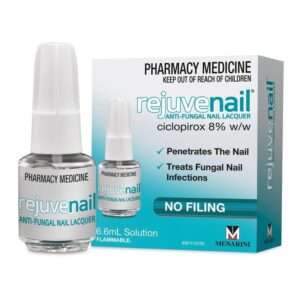
Loceryl Lacquer, containing amorolfine, can be applied 1-2 times a week. However, it requires filing down the nail, which can be tricky, especially when accessing the deep corners of the nail.
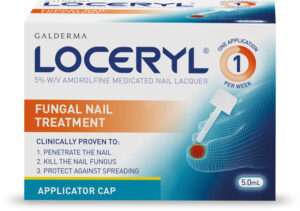
Medicated Nail Cream:
Efinaconazole (Jublia) and tavaborole (Kerydin) are antifungal creams you apply to the infected nails after soaking them.
How They Work: Topical treatments kill the fungus on the surface of the nail, but they are generally less effective than oral medications for severe infections.
Important Considerations:
You may need to use topical treatments for up to a year to ensure the infection is cleared completely.
Topical treatments often require thinning of the nail using a nonprescription lotion containing urea, or you may need to have your podiatrist thin the nail and remove the infected portion using a nail drill. This can help the antifungal medication reach the fungal infection more effectively, improving the success rate from 20% to 40%.
3. Other Treatment Options
Laser Treatment:
Some clinics offer laser treatment for toenail fungus, which uses laser light to penetrate the nail plate and destroy the fungus.
Success Rates: Laser treatment has shown promising results, with studies reporting clearance rates around 40-60%. There are different types of laser treatments, including cold laser, hot laser, and PACT laser, each with varying success rates and levels of discomfort.
Important Considerations: Laser treatment may require multiple sessions, and the infected nail will need to be professionally drilled or filed down. New, healthy nail growth may take several months to fully show the effects.
Home Remedies: While some home remedies, like tea tree oil or Vicks VapoRub, and vinegar soaks are popular, they are generally not as effective as prescription treatments. Success rates for home remedies tend to be less than 10%.
Summary of Toenail Fungus Treatment Success Rates:
Oral Antifungal Medications: 70-80% (Terbinafine) and 60-70% (Itraconazole).
Laser Treatment: Success rates range from 40-60%, depending on the type of laser used.
- Topical Antifungal Treatments: Success rates for topical treatments can be lower, ranging from 20% to 40%, especially if additional steps like thinning the nail are taken.
Home Remedies: Generally have a less than 10% success rate.
Choosing the right treatment for toenail fungus depends on your specific needs and preferences. For most patients, starting with less invasive options like topical treatments or laser therapy may be a better choice, with oral antifungals considered as a last resort due to their potential side effects. Always consult your podiatrist to determine the most suitable treatment for your condition.
Take the First Step Toward Healthy Toenails Today!
If you’re dealing with toenail fungus and aren’t sure where to turn, don’t wait—treatment options are available, and we’re here to help. At Leading Health Podiatry, our expert podiatrists are well-versed in effective solutions for fungal nails, from oral medications to laser therapy and more.
Don’t let toenail fungus hold you back any longer. Book your appointment today to start your journey toward healthier nails! Call us or schedule online now. Let us guide you to the most effective treatment for your unique needs.
